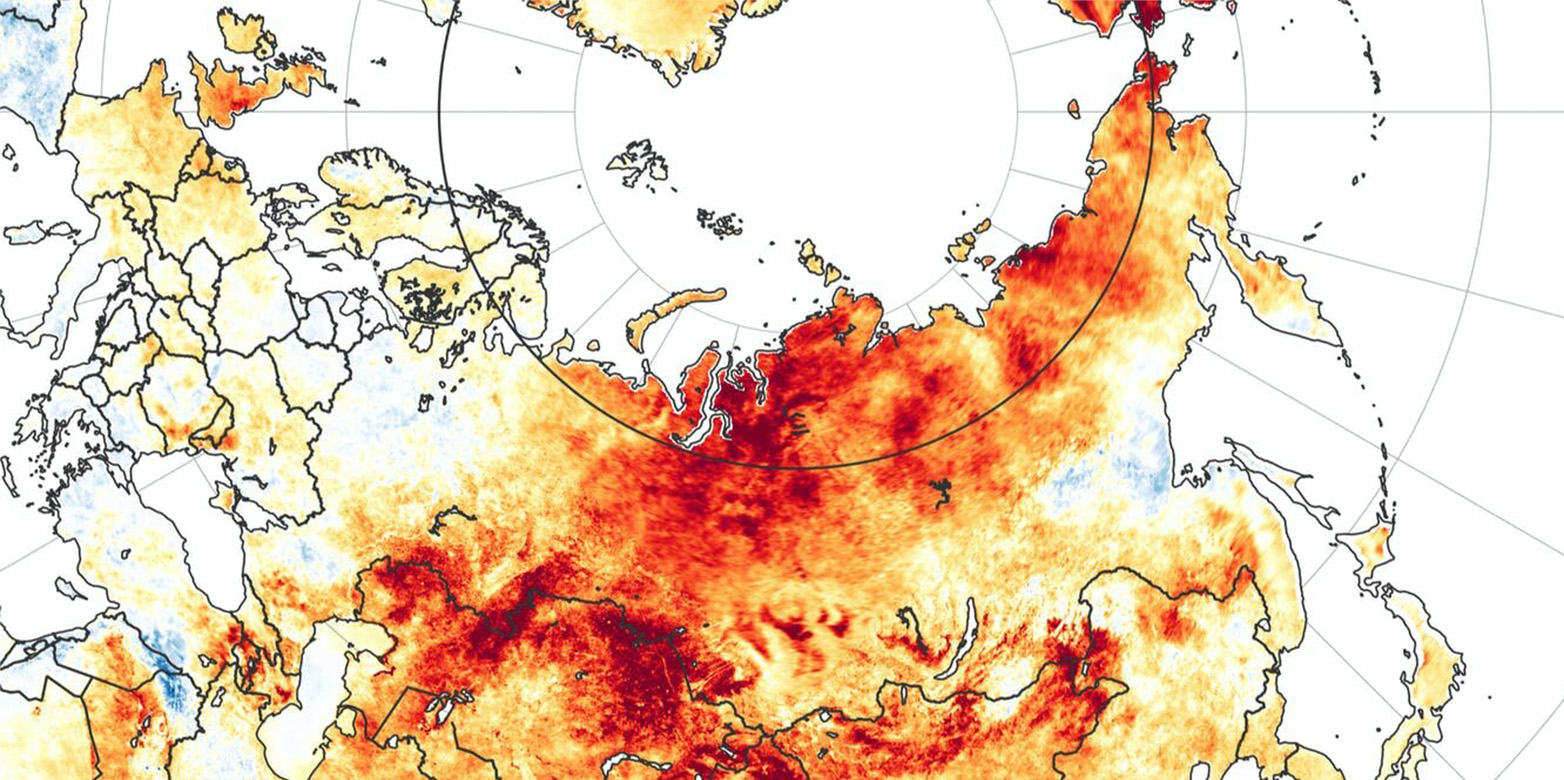Sibirische Hitzewelle - eine direkte Folge des Klimawandels
D-USYS
Die jüngste anhaltende Hitzewelle traf Sibirien von Januar bis Juni 2020. Ohne den Einfluss des vom Menschen verursachten Klimawandels hätte sie sich mit ziemlicher Sicherheit gar nicht erst ereignet. Zu diesem Schluss kamen Forschende des russischen P. P. Shirshov Institute of Oceanology in Zusammenarbeit mit verschiedenen europäischen Wetterdiensten. An der Studie mit beteiligt waren Sonia Seneviratne, Mathias Hauser und Flavio Lehner von der ETH Zürich.

The researchers from international universities and meteorological services also found that temperatures were more than 2°C hotter than they would have been if humans had not influenced the climate by releasing greenhouse gas emissions.
Record temperature for the Arctic
Temperatures in Siberia have been well above average since the start of the year. A new record temperature for the Arctic, 38°C, was recorded in the Russian town of Verkhoyansk on 20 June, while Siberia’s overall temperatures were more than 5°C above average from January to June.
To measure the effect of climate change on these high temperatures, the scientists ran computer simulations to compare the climate as it is today, with about 1°C of global warming, with the climate as it would have been without human influence, using the same methods as in past rapid and peer-reviewed studies.
Climate change makes heat waves in Siberia 600 times more likely
Their analysis showed that prolonged heat like Siberia experienced from January to June this year would only happen less than once in every 80,000 years without human-induced climate change - making it almost impossible in a climate that had not been warmed by greenhouse gas emissions. Climate change increased the chances of the prolonged heat by a factor of at least 600. This is among the strongest results of any attribution study conducted to date.
The scientists noted that even in the current climate the prolonged heat was still unlikely: such extreme conditions can be expected to occur less than once every 130 years. But without rapid cuts in greenhouse gas emissions they risk becoming frequent by the end of the century.
"These results show that we are starting to experience extreme events which would have almost no chance of happening without human footprint on the climate system", says Sonia Seneviratne, lead author on several IPCC reports and professor for Land-Climate Dynamics at at ETH Zurich. "We have little time left to stabilize global warming at levels at which climate change would remain within the bounds of the Paris Agreement. For a stabilization at 1.5°C of global warming, which would still imply more risks of such extreme heat events, we need to reduce our CO2 emissions by at least half until 2030.”
Negative side effects of the heat wave
The heat in Siberia has triggered widespread fires, with 1.15 million hectares burning in late June, associated with a release of about 56 million tonnes of carbon dioxide - more than the annual emissions of some industrialised countries such as Switzerland and Norway. It also accelerated the melting of permafrost - an oil tank built on the frozen soil collapsed in May, leading to one of the worst oil spills ever in the region. Greenhouse gases released by the fires and melting permafrost - as well as decreases in the planet’s reflectivity from loss of snow and ice - will further heat the planet. The heat has also been linked with an outbreak of silk moths, whose larvae eat conifer trees.
- The rapid attribution study of the Siberian 2020 heat wave has been published at externe Seite worldweatherattribution.org
- Personal profiles of Sonia Seneviratne, Mathias Hauser and Flavio Lehner